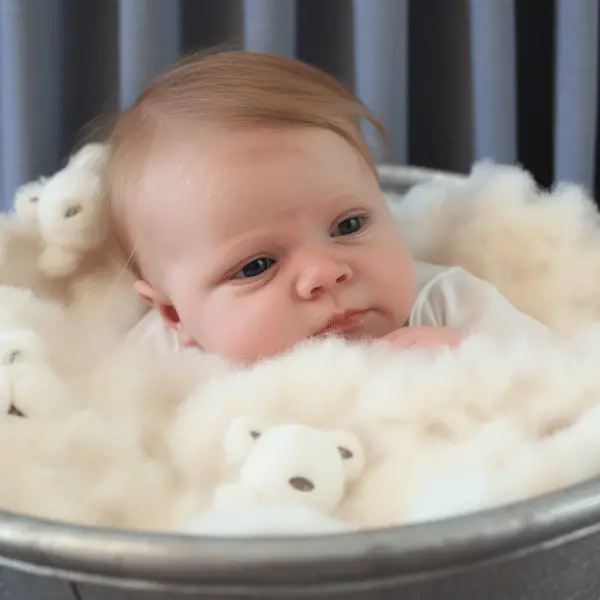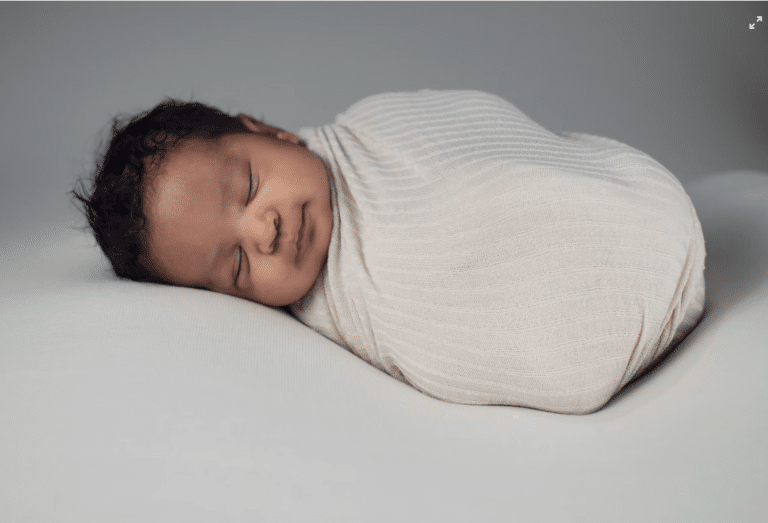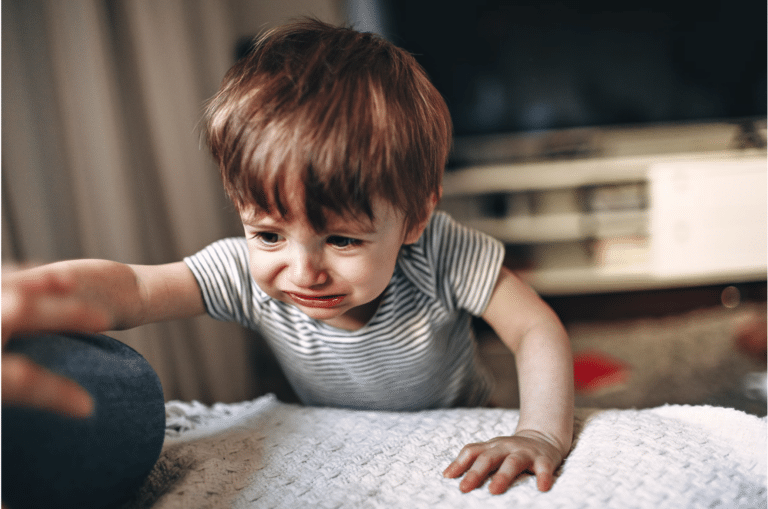Newborn Bathing Guide: Delay, Frequency, Safety, and Fun
Newborn Bathing Guide As a new parent, one of the most heartwarming and bonding experiences you’ll have with your baby is giving them their first bath. The gentle touch of warm water, the softness of their skin, and the sweet scent of baby shampoo create a moment that is both precious and memorable. In this article, I will guide you through the importance of delaying a baby’s first bath, the frequency of baths once they are home, how to give a sponge bath, when they are ready for a regular bath, and essential safety tips.
Key Takeaways:
- Delaying a baby’s first bath promotes bonding, breastfeeding, and temperature regulation.
- Newborns only need to be bathed a few times a week to maintain cleanliness.
- Until the umbilical cord falls off, a sponge bath is recommended to prevent infection.
- Transition to a regular bath once the umbilical area is fully healed.
- Ensure bath time safety by using appropriate tubs, supporting your baby, and monitoring water temperature.

When Should You First Bathe a Newborn?
Deciding when to give your baby’s first bath is an important decision that can have lasting effects on their health and well-being. In the past, it was common practice to bathe newborns immediately after birth. However, recent research and expert recommendations suggest delaying the first bath until 24 hours after delivery, or at least 6 hours for cultural reasons. This delay allows for several benefits.
Delaying the first bath helps maintain the baby’s body temperature and prevent hypothermia. Newborns are born with immature temperature regulation systems, and the presence of vernix, the waxy substance on their skin, helps to insulate and keep them warm. By waiting to bathe your baby, you are allowing their body to adjust to the outside temperature and reducing the risk of cold stress.
Bathing your baby after the initial breastfeeding session also promotes bonding between you and your little one. The scent of amniotic fluid and the natural oils on your baby’s skin can help facilitate the bonding process. The delay in bathing can also support successful breastfeeding, as it allows the baby to focus on nursing without any unnecessary interruptions.
| Benefits of Delaying Baby’s First Bath | Timing |
|---|---|
| Maintains body temperature | 24 hours after birth or at least 6 hours for cultural reasons |
| Supports bonding and breastfeeding | After the initial breastfeeding session |
| Preserves natural moisturizing properties of vernix | 24 hours after birth or at least 6 hours for cultural reasons |
It’s important to note that there are certain cases where the delay in bathing may not be suitable. Babies born to mothers with HIV or Hepatitis viruses should be bathed after the initial breastfeeding session to reduce the risk of transmission. If you have any concerns or questions about when to give your baby’s first bath, it’s always best to consult with your healthcare provider.
How Often Do Babies Need a Bath Once They Are Home?
After bringing your newborn home, it’s natural to wonder how often they should be bathed. While maintaining cleanliness is important, it’s not necessary to give your baby a bath every day. Newborns typically do not sweat or get dirty enough to require a full bath on a daily basis. In fact, bathing your baby too frequently can actually dry out their delicate skin.
The general recommendation is to bathe your baby two to three times a week during their first year. This frequency is usually sufficient to keep your baby clean without stripping away the natural oils that protect their skin. Of course, if your baby gets particularly dirty or has a diaper blowout, it’s perfectly fine to give them an extra bath as needed.
When bathing your newborn, it’s important to find the right balance. While regular baths are important for hygiene, overdoing it can lead to dryness and irritation. It’s also crucial to use gentle, baby-friendly products that won’t irritate their sensitive skin. Always check the water temperature to ensure it’s warm but not too hot, and keep your baby warm throughout the bath by covering their body with a towel or washcloth.
Suggested Frequency of Baby Baths
If you’re unsure about how often to bathe your baby, here’s a simple breakdown:
- During the first week after birth: Sponge bathe your baby to clean them without fully immersing them in water.
- From week two onwards: Transition to two to three baths per week, using mild baby soap and warm water.
- Between baths: Keep your baby’s face, neck, and diaper area clean by gently wiping them with a damp washcloth as needed.
Remember, every baby is different, and you should always consult with your pediatrician if you have any concerns or questions regarding your baby’s bathing routine. By finding the right balance and following expert recommendations, you can ensure that your baby stays clean and comfortable while keeping their skin healthy and protected.
Can My Baby Have a Bath Before the Umbilical Cord Falls Off?
Bathing your newborn is an important part of their care routine, but it’s essential to wait until the umbilical cord stump falls off and heals completely before giving them a full bath. Until then, sponge baths are recommended to prevent any potential infections and allow for natural healing.
The umbilical cord stump usually falls off within two weeks after birth, but it may take longer in some cases. It’s important to be patient and not rush the process. Giving your baby a sponge bath during this time can help keep them clean while minimizing the risk of complications.
To give your baby a sponge bath, gather all the necessary supplies, including a basin of warm water, a soft washcloth, mild baby soap, and a dry towel. Lay your baby on a comfortable and padded surface, keeping them warm throughout the bath. Start by gently washing their face and then move on to other areas, taking care around the umbilical cord stump.
Remember to consult with your healthcare provider if the umbilical cord stump remains after two months or if you have any concerns about bathing your baby. They can provide you with specific guidance based on your baby’s individual needs.
“Until the umbilical cord stump falls off, it is important to give your baby sponge baths to prevent any potential infections and facilitate healing.”
Bathing before the umbilical cord falls off: A safe and gentle approach
While you wait for the umbilical cord stump to fall off, be sure to follow these steps for a safe and gentle sponge bath:
- Gather all the necessary supplies, including a basin of warm water, a soft washcloth, mild baby soap, and a towel.
- Lay your baby on a comfortable and padded surface, ensuring that they are warm throughout the bath.
- Start by gently washing their face using a damp washcloth.
- Move on to clean other areas of their body, taking care around the umbilical cord stump.
- Pat your baby dry with a soft towel, ensuring they are warm and comfortable.
- Dispose of any soiled water and clean the basin thoroughly.
Following these guidelines will help keep your baby clean and safe during this important stage of their development. Remember, always consult with your healthcare provider if you have any concerns or questions about bathing your newborn.
| Benefits of Sponge Baths | Tips for Bathing Your Baby |
|---|---|
|
|
How to Give a Baby a Sponge Bath
A sponge bath is a gentle and safe way to clean your newborn before their umbilical cord stump falls off and they are ready for regular baths. Here are the steps to give your baby a sponge bath:
- Prepare all the necessary supplies, including a basin of warm water, a soft washcloth, a dry towel, mild baby soap, and any other items you may need.
- Find a comfortable, padded surface to lay your baby on. You can use a changing pad or a towel placed on a flat surface.
- Undress your baby and wrap them in a warm towel, leaving only the area you are currently bathing exposed.
- Dampen the washcloth in the warm water and gently wring out any excess water to make it damp but not dripping wet.
- Start by washing your baby’s face using the damp washcloth. Use gentle, circular motions to clean around the eyes, nose, and mouth.
Regular Baths
- Proceed to clean the rest of your baby’s body, working in small sections at a time. Remember to pay attention to creases, such as under the arms and in the diaper area.
- Use a separate clean and damp washcloth to clean their genital area. For boys, gently clean the penis and scrotum. For girls, gently clean the vulva, wiping from front to back.
- Dry your baby’s skin thoroughly with a soft towel, paying attention to all the creases and folds. Make sure they are completely dry before dressing them.
Remember to keep your baby warm throughout the sponge bath by covering them with a towel or blanket. Always maintain a firm grip on your baby to prevent any slipping or accidents. Keep the area well-lit but avoid any harsh or direct lighting that may irritate your baby’s eyes. Sponge baths can be a bonding experience for both you and your baby, so enjoy this special time together!
Remember, always consult your healthcare provider for specific instructions and guidance on caring for your newborn.
When Is My Baby Ready for a Regular Bath?
Transitioning your baby to regular baths is an exciting milestone in their early development. It’s important to wait until the umbilical area has completely healed before introducing regular baths. Once the umbilical cord stump falls off, usually within two weeks, you can start incorporating gentle and brief baths into your baby’s routine.
It’s crucial to prioritize safety during bath time. Use a safe infant tub or a sink with proper precautions to ensure your baby’s comfort and security. Always keep a close eye on them and never leave them unattended. Remember, accidents can happen in a matter of seconds, so constant supervision is essential.
When to Introduce Soap
When transitioning to regular baths, you may wonder when it’s appropriate to introduce soap and cleansers. It is generally recommended to avoid using soap on your baby’s delicate skin for the first few weeks. During this time, warm water alone is sufficient to cleanse their skin. Once their skin has adjusted, you can gradually introduce a mild baby soap or cleanser specifically formulated for newborns.
| Transitioning to Regular Baths | Newborn Care |
|---|---|
| Wait until the umbilical area has completely healed. | Ensure proper healing and avoid any potential infections. |
| Use a safe infant tub or sink with proper precautions. | Maintain a secure bathing environment for your baby. |
| Always supervise your baby during bath time. | Prevent accidents and ensure their safety. |
| Introduce soap and cleansers gradually. | Protect your baby’s delicate skin and prevent dryness. |
As your baby grows, bath time will become a cherished part of their routine. Enjoy this special bonding time and create a calming environment to make the experience enjoyable for both you and your little one. Remember, every baby is unique, so follow their cues and adjust the bathing routine to suit their needs.
Baby Bathing Safety: Protecting Your Little One During Bath Time
Ensuring your baby’s safety during bath time is of utmost importance. By following simple safety tips, you can create a secure and enjoyable bathing experience for your little one. Here are some essential child bath safety tips to keep in mind:
Use a Safe and Secure Infant Tub or Sink
Investing in a safe and secure infant tub or using a sink with proper support and non-slip surfaces is crucial. These ensure that your baby stays in a stable position during the bath, reducing the risk of accidents or slips. Remember to always keep a hand on your baby to prevent any unexpected movements.
Never Leave Your Baby Unattended
It is vital to never leave your baby unattended during bath time. Even if your baby is in a safe tub or sink, accidents can happen in an instant. Stay close to your baby at all times and keep a constant watchful eye on them. By remaining present and attentive, you can quickly respond to any potential dangers.
Check the Water Temperature
Before placing your baby in the bath, always check the water temperature to prevent burns or scalds. The water should be comfortably warm, around 100°F (38°C). You can use a bath thermometer or test the water with the inside of your wrist or elbow. Remember, it’s better to err on the side of caution and have slightly cooler water than risk scalding your baby’s delicate skin.
Keep Your Baby Warm Throughout the Bath
Babies can quickly become chilled during bath time. To keep your little one warm and cozy, ensure the room temperature is comfortable and avoid drafts. You can also use towels or washcloths to cover exposed areas of your baby’s body while bathing other parts. This helps maintain their body temperature and ensures a pleasant bathing experience.
| Child Bathing Safety Tips |
|---|
| Use a safe and secure infant tub or sink with non-slip surfaces |
| Never leave your baby unattended during bath time |
| Check the water temperature before placing your baby in the bath |
| Keep your baby warm throughout the bath to prevent chilling |
By following these child bath safety tips, you can create a secure and comfortable environment while bathing your baby. Remember, bath time is not only about cleanliness but also an opportunity for bonding and nurturing your little one’s well-being. Enjoy these special moments and keep your baby safe throughout the bathing journey.
When to Give Baby’s First Bath: What the Experts Say
Experts in newborn care recommend delaying a baby’s first bath until at least a few hours after birth, or even up to 24 hours. This delay has several advantages. Firstly, it helps regulate the baby’s body temperature and prevents cold stress. Secondly, it maintains blood sugar levels, which is particularly crucial for newborns. Additionally, delaying the first bath supports successful breastfeeding and promotes bonding between the baby and parents.
However, it’s important to note that there are some exceptions to this recommendation. In cases where a baby has been exposed to certain pathogens during birth, it may be necessary to provide an earlier bath. This is typically done after the initial breastfeed, in order to reduce the risk of transmission of viruses such as HIV or Hepatitis.
Delayed first baths help regulate body temperature, maintain blood sugar levels, and support breastfeeding and bonding.
By adhering to expert recommendations, parents can ensure that their baby’s first bath is a positive experience. These recommendations prioritize the baby’s health and well-being, taking into account the specific needs of newborns. It is always best to consult with healthcare professionals or pediatricians to understand the unique circumstances of each baby and make informed decisions regarding bath time.
When to Give Baby’s First Bath: Key Takeaways
- Experts recommend delaying a baby’s first bath until at least a few hours after birth, or up to 24 hours.
- Delayed baths regulate body temperature, prevent cold stress, and support successful breastfeeding and bonding between parents and baby.
- Exceptions may apply for babies exposed to certain pathogens during birth, where an earlier bath may be necessary after the initial breastfeed.
- Always consult with healthcare professionals or pediatricians to understand the specific needs of your baby.
| Expert Recommendations | Advantages of Delayed First Bath | Exceptions |
|---|---|---|
| Delay first bath until a few hours after birth, or up to 24 hours. | – Regulates body temperature – Prevents cold stress – Supports successful breastfeeding and bonding | – Babies exposed to certain pathogens during birth may require an earlier bath after the initial breastfeed. |
How Often Should You Bathe a Newborn? Expert Advice
When it comes to bathing a newborn, it’s important to strike the right balance. Too much or too little bathing can both have their drawbacks. So, what do the experts recommend when it comes to the frequency of newborn baths?
According to expert advice, bathing a newborn two to three times a week is generally sufficient. Newborns do not sweat or get dirty enough to require daily baths. Over-bathing can strip the baby’s delicate skin of its natural oils and lead to dryness, which can be uncomfortable for the baby.
However, every baby is unique, and some may require more or fewer baths depending on their individual needs. Factors such as climate, skin sensitivity, and any skin conditions should also be taken into account. It’s important to monitor your baby’s skin and adjust the bathing frequency accordingly.
Expert Tips for Bathing Newborns:
- Use lukewarm water: The water temperature should be comfortably warm, around 100°F (37-38°C). Test the water with your elbow or a bath thermometer to ensure it’s not too hot or too cold.
- Keep bath time short: A quick and gentle bath is all that’s needed for a newborn. Aim for a bath duration of 5-10 minutes to prevent overexposure to water and help maintain body temperature.
- Be mindful of products: Choose mild, fragrance-free baby soap and shampoo specifically formulated for newborns. Avoid using adult products or harsh cleansers that may irritate the baby’s delicate skin.
- Pay attention to skin folds: Thoroughly clean the folds and creases in your baby’s skin, such as the neck, armpits, and diaper area, to prevent the buildup of moisture and bacteria.
- Pat dry, don’t rub: After the bath, gently pat your baby’s skin dry with a soft towel. Avoid rubbing as it can cause irritation.
By following expert advice and monitoring your baby’s individual needs, you can establish a bathing routine that promotes cleanliness, comfort, and healthy skin. Remember, every baby is different, so it’s essential to trust your instincts and consult with your pediatrician if you have any concerns or questions.
| Expert Advice | Frequency of Newborn Baths |
|---|---|
| Expert Recommendation | 2-3 times a week |
| Benefits | Maintains natural skin oils, prevents dryness |
| Considerations | Climate, skin sensitivity, any skin conditions |
| Water Temperature | Lukewarm (around 100°F) |
| Bath Duration | 5-10 minutes |
How to Bathe a Newborn: Step-by-Step Guide
Bathing a newborn requires gentle care and attention to ensure their safety and comfort. Follow this step-by-step guide to make bath time a soothing and enjoyable experience for both you and your baby.
Step 1: Gather the Necessary Supplies
Before starting the bath, gather all the supplies you’ll need. This includes a basin or infant tub, warm water, mild baby soap, a soft washcloth, a towel, clean clothes, and any additional items you may want, such as gentle baby shampoo or lotion.
Step 2: Prepare the Bath Space
Choose a warm, draft-free area in your home to give your baby a bath. Ensure that the surface is stable and comfortable, whether you’re using a baby bathtub or a sink. Place a non-slip mat or towel at the bottom of the tub or sink to prevent any accidental slipping.
Step 3: Fill the Tub with Warm Water
Fill the tub with two to three inches of warm water. Test the water temperature with your elbow or a baby bath thermometer to ensure it’s not too hot or too cold. The ideal water temperature for a baby’s bath is around 100 degrees Fahrenheit (37 degrees Celsius).
Step 4: Undress Your Baby
Gently undress your baby, leaving only their diaper on. Use a soft washcloth or baby wipe to clean their face, starting from the inner corner of the eye and wiping outward. Use a separate corner of the cloth for each eye to avoid spreading any potential infection.
Step 5: Support Your Baby’s Head and Neck
With one hand supporting your baby’s head and neck, carefully lower them into the water, keeping a firm grip on their body. Use your other hand to support their bottom and lower them gently into the tub, feet first. Keep a confident and comforting tone throughout the process to help your baby feel secure.
Step 6: Clean Your Baby’s Body
Using a soft washcloth, gently clean your baby’s body, starting from their neck and working your way down to their toes. Be sure to clean all the creases, such as the armpits, behind the ears, and the diaper area. Use mild baby soap sparingly, focusing on the areas that require extra cleaning.
Step 7: Rinse and Dry Your Baby
To rinse off the soap, use a clean washcloth and warm water. Squeeze out the excess water and gently wipe away any remaining soap from your baby’s body. Lift them out of the water, supporting their head and neck, and wrap them in a soft, dry towel. Pat them dry, paying extra attention to the creases to prevent moisture build-up.
After drying your baby, dress them in clean clothes and ensure they are warm and comfortable.
Remember to always supervise your baby during bath time and maintain a calm and soothing environment. Use these steps as a guide and adjust them to suit your baby’s needs. With practice, bath time will become a cherished bonding experience for both of you.
Bath Time with Toddlers: Tips and Fun Ideas
Bath time with toddlers is not only a chance to keep them clean but also an opportunity for fun and learning. As toddlers are more active and curious, it’s essential to make bath time enjoyable and safe for them. Here are some tips and ideas to make bath time an engaging experience:
Create an Interactive Environment
- Use bath toys that encourage learning and creativity, such as foam letters and numbers. This not only entertains your toddler but also helps them learn basic concepts.
- Consider using stacking cups and bath books with colorful pictures to engage your toddler’s senses and promote cognitive development.
Add Music and Creative Activities
- Make bath time even more enjoyable by playing soothing music or singing songs with your toddler. This can create a relaxing atmosphere and help your little one unwind before bedtime.
- Introduce bath paint or crayons that are specifically designed for the bathtub. Your toddler can use them to express their creativity and imagination on the bathroom tiles or a special bath-friendly canvas.
Establish a Bath Time Routine
- Having a consistent bath time routine can help your toddler feel secure and understand what to expect. Set a fixed time for bath time and follow a sequence of activities, such as undressing, washing, playing, and drying off.
- Ensure you create a calm and relaxed environment during bath time. Dim the lights, use soft towels, and speak gently to your toddler to help them wind down before bedtime.
Remember, safety should always be a priority during bath time. Always supervise your toddler closely, never leaving them unattended in the water. Ensure the water temperature is appropriate and use non-slip mats or stickers to prevent slips and falls in the bath. By incorporating these tips and ideas, bath time with your toddler can become an enjoyable and enriching experience for both of you.

Conclusion
In conclusion, bathing your baby is not just about cleanliness, but also a precious bonding experience. Following expert recommendations, it is best to delay baby’s first bath until at least 24 hours after birth, allowing for the many benefits such as regulating body temperature, promoting breastfeeding, and protecting their delicate skin with vernix.
Once the umbilical cord stump has fallen off and is completely healed, you can transition to regular baths. However, it is important to strike a balance and avoid over-bathing, as newborns rarely get dirty enough to require daily baths. Experts suggest bathing your baby two to three times a week to maintain their skin health.
When it comes to bath time, safety is paramount. Use a safe infant tub or sink with proper support and non-slip surfaces, and never leave your baby unattended. Keep the water temperature in check to prevent burns, and ensure your baby stays warm throughout the bath.
By following these guidelines and incorporating fun activities, bath time can become a cherished routine for both you and your baby. Create a soothing environment, engage your child with bath toys and educational tools, and establish a bath time routine to help them relax before bedtime. Enjoy these special moments and watch your baby thrive.
FAQ
When is the recommended time to give a newborn their first bath?
It is now recommended to delay baby’s first bath until 24 hours after birth, or at least 6 hours if a full day isn’t possible for cultural reasons.
How often do babies need a bath once they are home?
Newborns don’t need to be bathed every day. Three baths per week during the first year may be sufficient to keep your baby clean.
Can my baby have a bath before the umbilical cord falls off?
Until the umbilical cord stump falls off and is completely healed, it is recommended to give your baby sponge baths.
How do I give a baby a sponge bath?
To give your baby a sponge bath, have all the necessary supplies ready such as a basin of warm water, a damp washcloth, a dry towel, and any other items you may need. Lay the baby on a comfortable, padded surface and start by gently washing their face before moving on to the rest of their body.
When is my baby ready for a regular bath?
Once the umbilical area is healed, you can start giving your baby regular baths. However, their first baths should be gentle and brief.
What are some child bathing safety tips?
To ensure your baby’s safety during bath time, use a safe infant tub or sink with proper support and non-slip surfaces. Always keep a hand on your baby and never leave them unattended. Check the water temperature to prevent burns and scalds, and keep your baby warm throughout the bath.
When is the recommended time to give a newborn their first bath, according to experts?
Experts recommend delaying baby’s first bath until at least a few hours after birth, or even up to 24 hours.
How often should you bathe a newborn, according to expert advice?
Experts agree that bathing a newborn two to three times a week is sufficient.
How do I bathe a newborn? Can you provide a step-by-step guide?
To bathe a newborn, start by giving a sponge bath until the umbilical cord stump falls off. Once it’s healed, transition to regular baths using a safe infant tub or sink. Always keep the baby warm and comfortable throughout the bath.
What are some tips and fun ideas for bath time with toddlers?
Use bath toys, such as foam letters and numbers, stacking cups, and bath books to make bath time enjoyable. Incorporate music and creative activities like bath paint and crayons. Set a bath time routine to help your toddler relax before bedtime.






